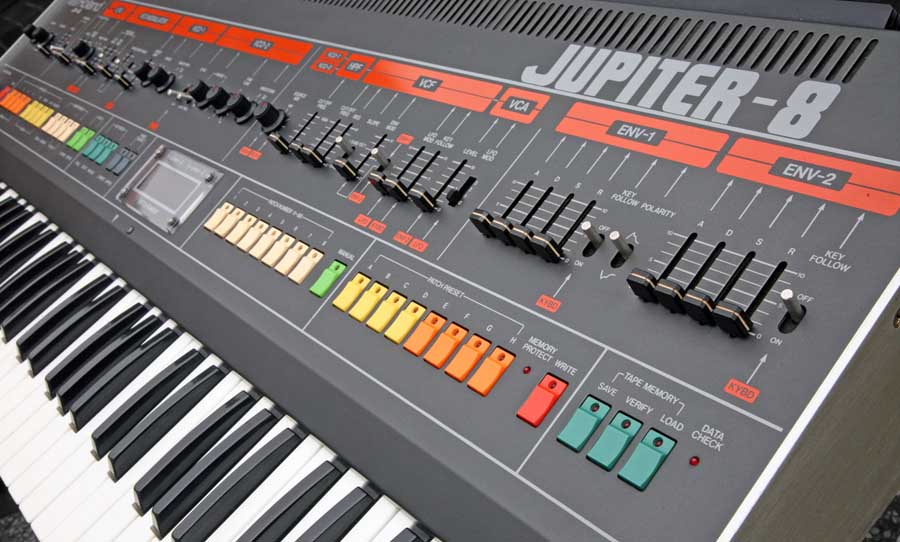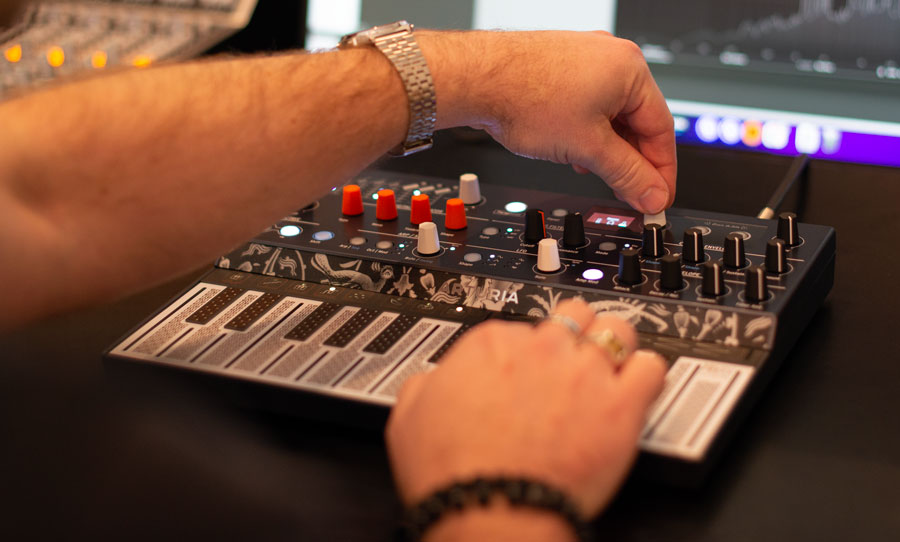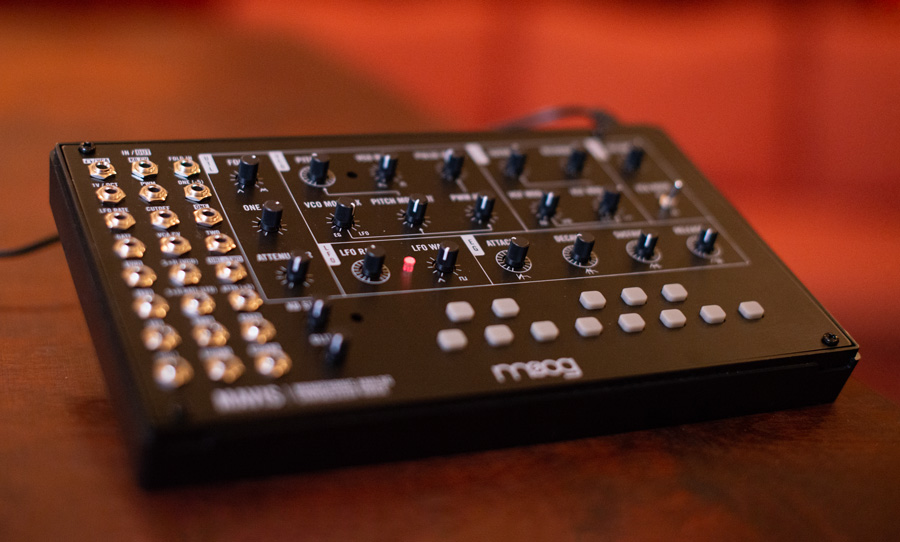If it isn’t the fattest synth in history, it’s damn near close. The Roland Jupiter-8 dished up rich polyphony and represented the peak of the analog craft.
In the 1970s and early 1980s, manufacturers of synthesizers were engaged in a battle. Not necessarily in price, though that definitely came into it. They were in a desperate race for innovation in analog technology. This was the environment that spawned Roland’s Jupiter-8.
In a few short years, digital technology had gone from being a spec on the horizon to looming menacingly large in the pro audio industry. The winds of change were blowing strong and in the last few years leading up to the digital takeover, the art of analog sound reached its zenith. The Jupiter-8 represented the best of analog polyphonic synthesis, combined with premium playability.
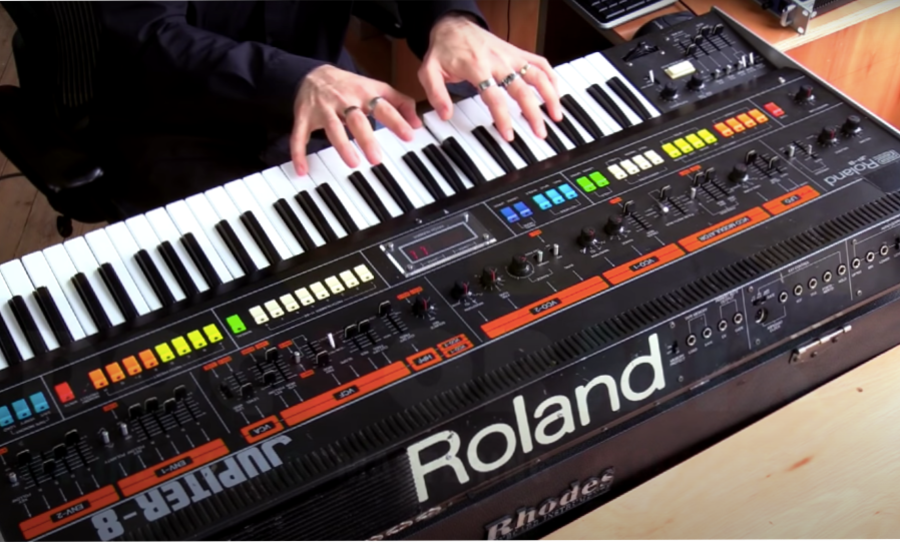
Roland Goes Polyphonic
Though the Jupiter-8 was the summit of Roland’s adventures in polyphony, it wasn’t the first in this space-themed series. 1978 saw the release of the Jupiter-4, which, as you can probably figure out, had 4 synth voices as opposed to the later model’s 8.
Though it wasn’t a massive success – outperformed by the likes of the Sequential Circuits Prophet 5 and Oberheim OB-X – it did represent a leap forward for Roland. Firstly, it was the company’s first polyphonic synth. Secondly, it made use of digital technology for controlling its analog circuits, earning it the “Compuphonic” tag and meaning that the user could delve into voice assignment modes and utilise programmable memory slots.
Being their first foray into this new world, the Jupiter-4 didn’t quite ascend the heights that distinguished Roland’s later offerings and couldn’t match with the aforementioned competition. Therefore, a few short years later, the company returned with an instrument that didn’t merely compete, but dominated. A huge, lush polysynth that was a worthy namesake of the solar system’s largest planet.
Sound Generation
The sounds of the synth were generated via two oscillators. VCO 1 possessed 4 waveforms: triangle, sawtooth, pulse and square waves – these could be played over a span of 4 octaves. VCO 2 replicates VCO 1, with the exception of a noise generator in place of the square waveform. It was also fitted with a Low Freq switch.
From there, the two VCOs could be modulated by the LFO or ENV1, with the LFO offering 4 waveform variations: sine saw, square and random. A second LFO can also be activated via a switch. The mixer section balances the amount coming from each VCO.
Even with this amount of sound-sculpting options on hand, the possibilities were huge. But it was the way that the Jupiter-8 could split voices, effectively combining two polyphonic synths in the same enclosure that set it apart. The Key Mode section was key in creating the multiple, beguiling personalities of this analog behemoth.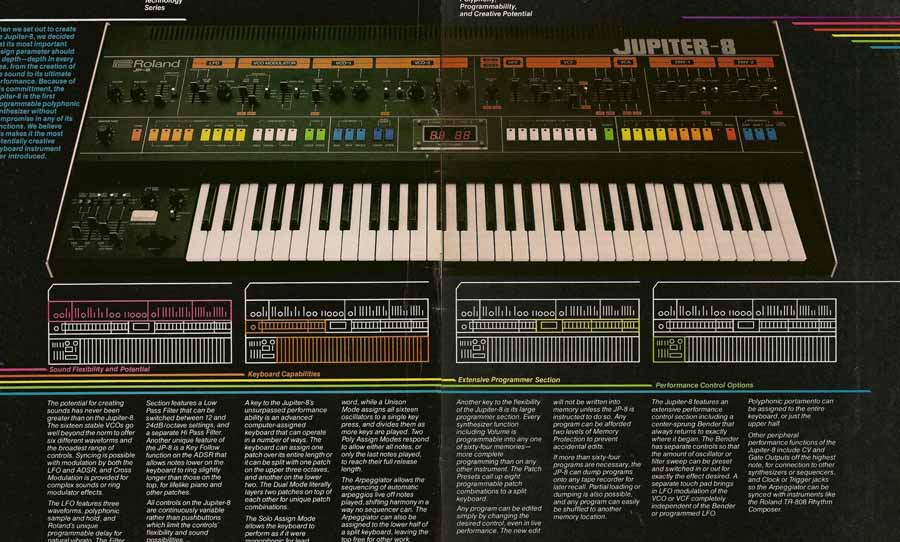
These Key Modes comprised of Whole, Dual and Split. In ‘Whole’ mode, a single patch was spread out across the whole keyboard, using all eight voices. In Dual mode, polyphony was reduced to 4 voices, however, each voice was layered with 2 simultaneous patches. The volume of each patch was able to be controlled with a slider. In Split mode, 2 patches could be split up into different sections of the keyboard.
Adding to the overall thickness of the instrument were the Assign modes. For example, in Solo mode, all 16 oscillators (2 per synth voice) were assigned to one note, making it an incredibly powerful tool for creating thumping basslines, or the thickest leads imaginable. In Unison mode, the oscillators are stacked onto one note, then divided across the notes as you add them.
Digital Love
Though analog at heart, to say that Jupiter-8 completely ignored the rising power of digital technology would be misleading. And while the synth was released before the widespread adoption of MIDI, it implemented the new technology in ways that made the instrument more user-friendly. The implementation of the Zilog Z80 CPU meant 64 patches could be stored on the synth. It also powered the auto-tune function, gave users the ability to store keyboard split points, arpeggiator settings and more.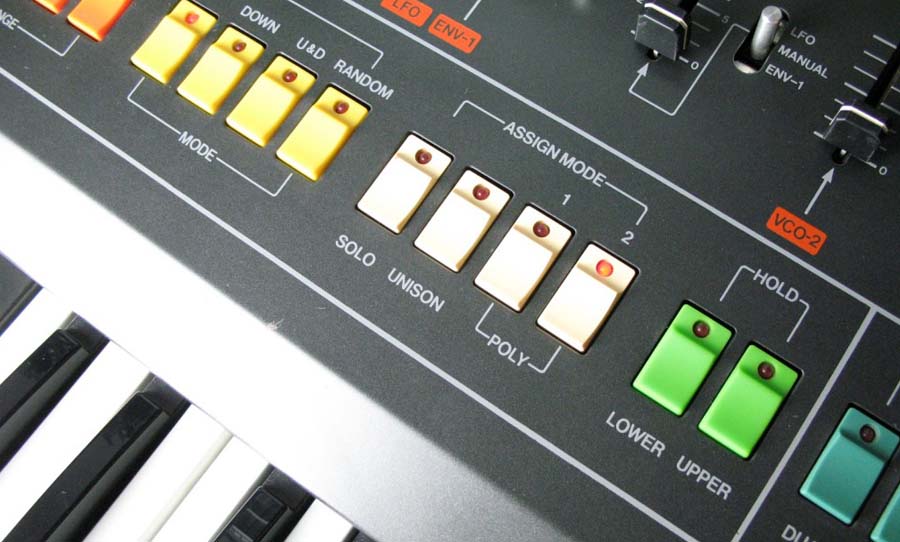
Speaking of digital tech in an analog synth, the DCO played a major role in Roland’s other line of the astronomically themed synthesizer: the Juno. This instrument was on a parallel trajectory with its big brother, having its own rivals, chiefly in the form of the KORG PolySix.
While it didn’t possess the sumptuous voice count and architecture of the Jupiter-8, it was groundbreaking for a different, yet very significant reason: price. The Juno was at the forefront of synths that were at least within the financial reach of the everyday musician and went on to enjoy widespread commercial success. This is also reflected in the prices of the vintage versions of each instrument – the Juno still won’t break the bank, the Jupiter-8, however, will have you assessing which kidney you can live without.
Considering the certifiably insane price that it can fetch, emulations of the Jupiter-8 are popular. Roland’s new System-8 Plug-Out synth is capable of pulling the tones of not only the Jupiter-8 but also the Juno 106 and the rare JX-3P model. It has also made it into the software world, with Roland Cloud offering their own version of the Jupiter-8 and everyone’s favourite synth suite, Arturia’s V Collection, providing their own take on the classic.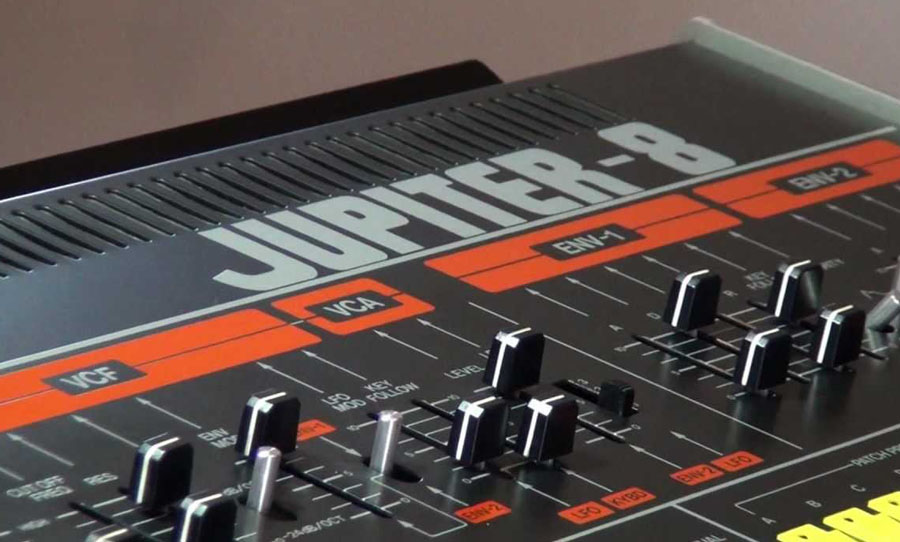
The Jupiter-8 marks a rare time in instrumental development where bottom-line imperatives weren’t always first priority. Though it would be naive to suggest that it didn’t matter at all (it was only in production for three years and was ultimately knocked out of the marketplace by digital synths like the Yamaha DX7), the Jupiter-8 showcased the wild ambition of Roland, who crammed the biggest, most sophisticated synth they possibly could into one stylish enclosure. For that reason alone, it deserves to be celebrated.
